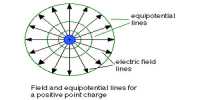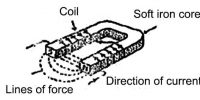We can’t say which atom of a radioactive element will decay and when it will take place. But we can calculate how many atoms will decay at a particular time. A cluster of atoms is considered to study the decay of atoms. The time during which just half of the total number of radioactive atoms undergoes disintegration is called the half-life of that element. As for example, let us assume that there are 800000 atoms in a radioactive element.
The time required for the decay of its half i.e. 400000 atoms to transform into a new element is known as its half-life. After a next half-life, there remain 200000 numbers of atoms. After another half-life, the number of atoms will be 100000 and thus it will continue.
The radioactive element is an element subject to spontaneous degeneration of its nucleus accompanied by the emission of alpha particles, beta particles, or gamma rays. All elements with atomic numbers greater than 83 are radioactive. Naturally occurring radioactive elements include radium, thorium, and uranium. Several radioactive elements not found in nature have been produced by the bombardment of stable elements with subatomic particles in a cyclotron. Here a law of possibility works, which atom will disintegrate when, none can say it.












